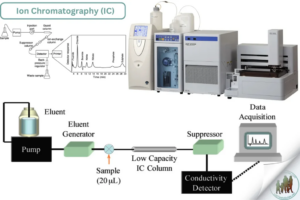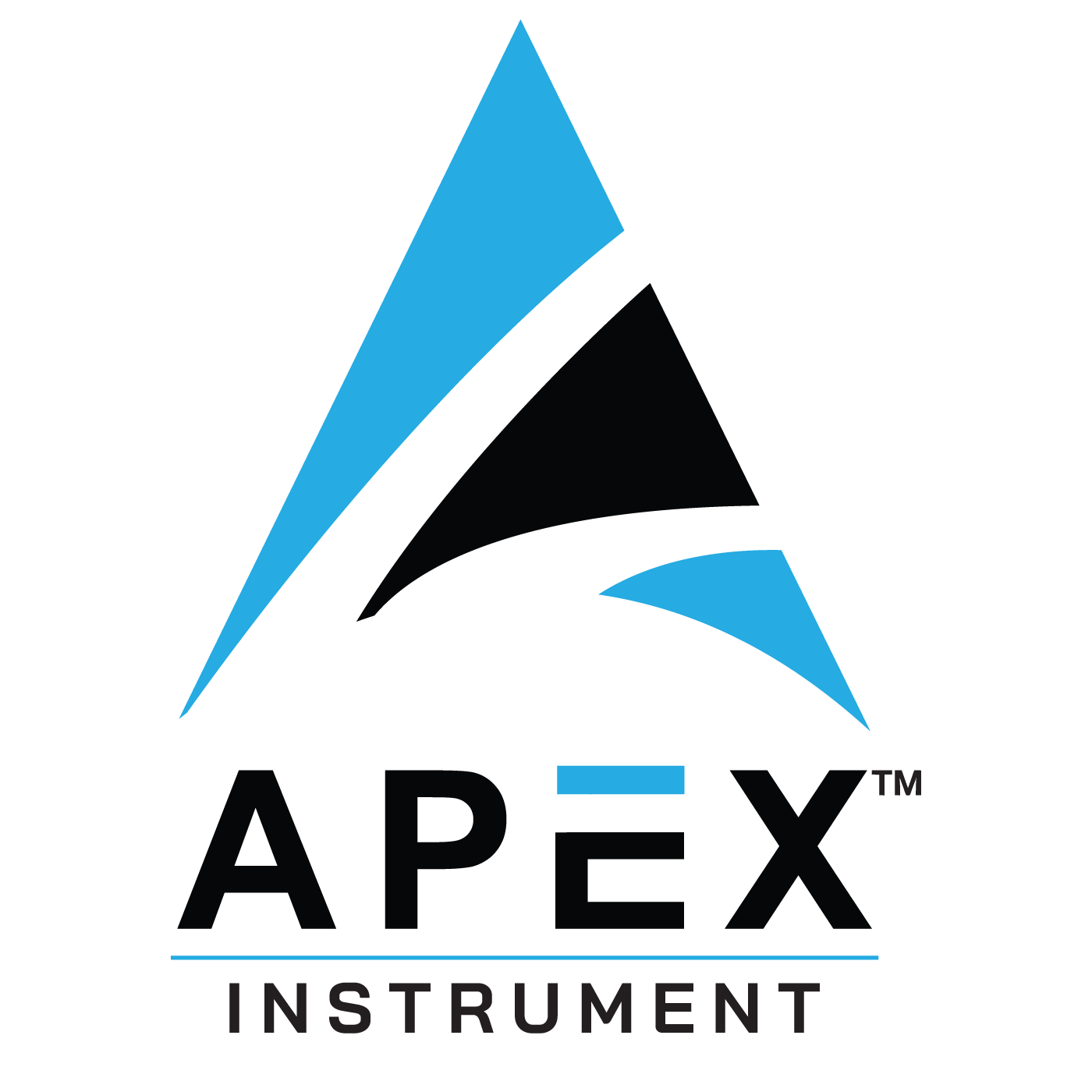Treating wastewater effectively is crucial to protect the environment and human health and this is becoming simplified with the help of a highly effective and advanced tool called Ion chromatography (IC) used by scientists and engineers in detecting a wide variety of pollutants ensuring the safety of water. It’s the method to separate and measure the ions in solution like sodium, chloride, and nitrate that are found in water.
What is Ion Chromatography (IC)?
Ion chromatography (IC) is a chemical separation technique that uses a chromatography column containing an ion exchange resin to separate ions in solution according to their charge and size.
Ion Chromatography is a specialized type of liquid chromatography that separates ions based on their interactions with a resin-packed column and a moving liquid phase (mobile phase). Unlike traditional chromatography, which separates a variety of compounds based on their chemical properties, IC specifically targets charged species (ions), such as anions (negatively charged ions) and cations (positively charged ions).
The technique works by passing a liquid sample through a chromatographic column that is packed with an ion-exchange resin. This resin has functional groups that can selectively adsorb ions from the sample. As the sample flows through the column, different ions interact with the resin to varying degrees, depending on their size, charge, and affinity for the resin. These ions are then separated into distinct peaks when detected by a conductivity detector, and the resulting chromatogram provides a clear representation of ion concentrations.
How Does Ion Chromatography Work?
- Sample Introduction: A liquid sample containing ionic species is injected into the chromatograph.
- Separation: The sample is carried through the column by the mobile phase, which is typically a buffered solution. The ions in the sample interact with the resin material inside the column, which has specific sites that attract particular ions. These interactions cause ions to move at different speeds through the column, effectively separating them based on their charge and affinity.
- Detection: After separation, ions are detected by a conductivity detector, which measures the ability of the ions to conduct electricity. The detector generates a signal, producing a chromatogram that shows the presence and quantity of different ions in the sample.
- Analysis: The chromatogram is analyzed, and the areas under the peaks are quantified to determine the concentrations of the various ions present in the sample.
IC is a detective that determines and separates ions to discover what is present in water samples (solutions). For instance, you have a mixture of charged particles in a liquid, like ions in water, and you want to figure out exactly what’s in there. Ion chromatography sends the liquid through a special tube called a column. Inside the column, the ions interact with materials that separate them based on their charges and how strongly they stick to the column. A liquid sample is passed through a column filled based on their charges. After this, the separated ions exit the column individually and pass through a detector. The detector identifies each ion and measures its amount by comparing the results to pre-stored data. The process is fast in providing detailed information on ions present in the sample, which makes it useful in wastewater treatment to spot pollutants like heavy metals etc.
Advantages of Using Ion Chromatography
- High Precision: Detects even the smallest concentrations of ions.
- Speed: Provides results quickly, saving time in decision-making.
- Versatility: Analyzes a wide range of ions in one test.
- Automation: Modern IC systems reduce human error and make the process efficient.
Applications of Ion Chromatography (IC) in Wastewater Treatment
Water scarcity has led to the need for wastewater treatment and cleaning wastewater is not only difficult but also tightly regulated by strict laws. This process is crucial for life, whether it’s protecting the environment or human well-being. Over time, new technologies are being developed to detect emerging pollutants effectively. Among these, Ion Chromatography (IC) is a versatile tool, making it easier to identify contaminants and detect them early.



Applications of Ion Chromatography
- Drug development. IC is a popular analysis method in the manufacturing and disposition of pharmaceutical products, as it can simultaneously examine multiple ions and their concentrations. …
- Food & beverage analysis. …
- Soil Analysis
- Environmental (Air) testing. …
- Mineral Water and Wastewater Analysis
Here’s a detailed look at how IC is applied in wastewater treatment:
Detecting harmful contaminants:- the primary reason for using IC is to identify the harmful substances in wastewater. It is qualified in identifying a wide range of toxic substances such as nitrates and phosphates- the nutrients that can cause algal blooms in water bodies and chloride and sulfates- whose excessive levels can damage soil and the ecosystem if released untreated. This works even at very low concentration providing a quick result without losing precision.
Compliance with regulations:- Wastewater comes from a number of sources. Industrial wastewater is more difficult to treat than domestic wastewater. The government has strict safety limits set when it comes to water safety for it not only affects the environment but also human health. IC helps facilities monitor and meet these standards, avoiding penalties and protecting the environment.
Optimizing Treatment Processes:- The precise data provided by IC helps the engineers in fine-tuning treatment methods. It gives a better understanding to determine and adjust the exact chemical doses required for removing contaminants, and avoiding overuse of chemicals that can reduce cost and pollution.
Monitoring corrosion risk:- ions like chloride and sulfate can be highly corrosive to treatment plant equipment. IC helps in taking advanced measures like adding corrosion inhibitors or replacing materials that may damage pipes and infrastructure extending the life of equipment.
Spot heavy metals:– IC helps spot hazardous metals like lead, cadmium, or chromium. These metals even in tiny amounts can be highly toxic to humans and ecosystems. Through IC it is possible to detect at an early stage allowing proper treatment and safe disposal.
Identifying organic acid and by-products:- Disinfection processes can create by-products like chlorite or bromate, imposing health risks if not removed. IC helps detect small organic acids and by-products formed during treatment processes, ensuring these by-products are within safe limits.
Ensuring reuse and recycling of treated water:– as water scarcity becomes a growing concern globally, water treatment plants are focusing highly on recycling treated water. IC here plays a major role in certifying the quality of treated water if it’s ready to reuse. Also ensuring the water is free from ions that might cause interference with industrial or agricultural applications.
Tracking environmental impact:- IC is great in providing insight into the environmental effects of water discharge as it can measure residual contaminants like phosphates or nitrates predicting their impact on nearby water bodies. Knowing the data in advance helps adjust the treatment process minimizing the risk to the ecosystem.
Early warning system for emerging contaminants:- with time there has been a need for advancement in technologies with emerging pollutants that need to be detected early, ensuring that treatment facilities can adapt to new challenges in wastewater management.
Supporting advanced treatment method:- IC plays a major role in supporting advanced wastewater treatment methods. For instance, In Reverse Osmosis (RO), IC checks the ion levels in water before and after the process to make sure the RO membranes are working properly. In Electrodialysis and Ion Exchange, IC helps by measuring ion levels to improve these processes for better results. Such advanced methods are useful in industries and places where the quality of water is a strict concern.
Every advantage brings its own set of challenges. IC equipment can be expensive and requires regular maintenance. Skilled technicians are often needed to interpret data, but the benefits outweigh these challenges, especially in critical situations where treating wastewater is involved. With time, the role of IC in treating wastewater is expanding making the IC system affordable and easier to use.
Ion chromatography (IC) is a game changer in the process of wastewater treatment. Its ability to identify a wide range of ions ensures that treated water is safe for discharge or reuse, ultimately protecting ecosystems and human health. As the demand for cleaner water continues to rise, the role of Ion Chromatography in wastewater treatment will only grow in importance, contributing to more sustainable and effective water management practices across the globe.
By enabling precise monitoring of pollutants and helping ensure compliance with environmental regulations.




